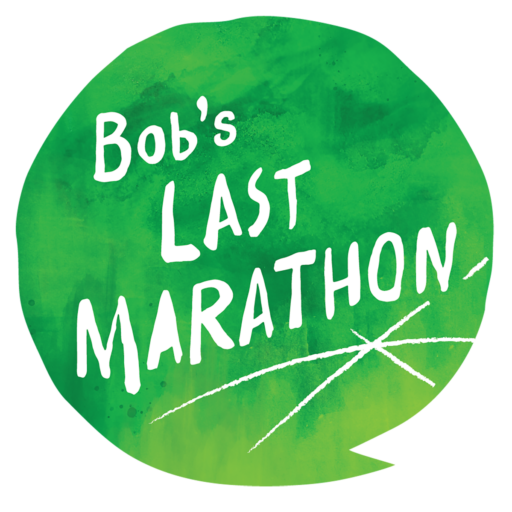Transcript
Daily Routine
It is fair to say that few people know me better than my therapist, Kathy. Over the years, I’ve sat on the couch in her office, often with Bob, always with fresh flowers on the coffee table, and confided my fears and my hopes as a person, as a caregiver, and as a wife. Recently, as we were reminiscing about Bob, we laughed recalling how I used to pack his schedule with activities, as though to crowd out any chance for his decline. But then, in all seriousness, she said that it may have, in fact, worked. Keeping Bob active not only helped improve his quality of life, but possibly slowed some cognitive changes.
Looking back, I never planned to crowd Bob’s schedule. It happened gradually, starting purely as a practical need to get organized so I could give Bob the care he needed while continuing my own work and activities. As Bob’s level of function changed, his daily routine became more elaborate, and my role evolved into one of manager, working with home care and day care aides, and over time, coordinating activities through a network of services, support groups, and senior centers.
The routine changed over time, but his days were never without structure.
Bob’s day started at 8 am, pretty much on the dot, and usually ended at 8 pm as he got ready for bed—though bedtime might vary to make room for a movie, concert, or gathering with friends, especially over the weekend.
Early on, I made a few rules for the home care team. One was that Bob could not lie down during the day. It was okay for him to nap sitting up in a chair—what he called a “snooze”—but the bed was for nighttime sleep only. I believe this routine helped ensure Bob would consistently get a good night’s sleep, so important to his health. It wasn’t until the last months before his passing that Bob’s sleep got more erratic. He would wake up in the middle of the night and, quietly and inexplicably, start moving his legs.
Bob’s morning routine was the same to the very end: toilet, shower, shaving, and getting dressed, which helped set his daily rhythm in motion. He was always ready for the day about 30 minutes after waking, well-groomed, in good spirits, and prepared for breakfast. I believe that even this simple goal helped Bob start his day with a sense of purpose and retain his sense of self. I still have beautiful memories of Bob smiling at me and saying, “Good morning, Lena” as he walked by my office on his way to the kitchen for breakfast.
Every day from Monday to Friday, Bob’s core activity was day care. At 9:30, Jack, the driver, would bring Bob to Rosener House for his four to five hours of group activities—discussion of current events, exercise, art, music, plus lunch, coffee breaks, ice cream socials, and an occasional outing. Knowing that social interaction is a key element in dementia care, and knowing Bob’s natural affinity for people, I viewed Rosener House as the most important activity of his day. From my conversations with fellow caregivers over the years, I’ve learned that some loved ones refuse day care. I always felt very sad for them, for what they were missing—the power of social interaction in slowing cognitive decline, and the respite for caregivers while their loved ones are safe and secure in a supportive environment.
Bob engaged in a variety of activities after day care. Workouts with his trainer, Andre, twice a week. Cognitive therapy twice a week. Time with his caregiver Miriam or Thomas for walks, reading the newspaper, listening to music, reminiscing. Bob loved talking about his days as an engineer working on the space shuttle. He also enjoyed sharing pictures and telling stories about his parents, proud immigrants from Slovakia, and his childhood in Yonkers, New York. Bob’s days were richly active. Which brings me to the second rule I made for our home care team: no TV until after dinner. In my mind, watching TV is too passive, and it could not replace the activities that engaged Bob, and helped slow the decline in his verbal and other cognitive skills.
Bob liked sitting in the kitchen watching me make dinner. Afterward, we both enjoyed “Jeopardy” and then “Wheel of Fortune.”Bob would delight me with his observations about Alex Trebek, like “He doesn’t have his mustache this week,” or “He has new glasses.” On occasion, he would solve a puzzle on “Wheel of Fortune” and look quite pleased with himself. I was ecstatic.
We both also loved going to our local bookstore, Kepler’s, for events. One particularly memorable experience was meeting Elizabeth Strout after the release of her book “My Name Is Lucy Barton.” Likely noticing Bob in his wheelchair, Strout beckoned us to the front of the queue, greeting us warmly and signing Bob’s copy of the book. By that time, Bob was no longer reading books on his own, but he liked being with me and the energy of the people in the room.
Our Friday date night was sacrosanct. I would leave work mid-afternoon to meet Bob upon his return from day care, and we’d go straight to the movies—popcorn and diet soda for Bob, and a hot dog for me. Afterward, we would have dinner at a favorite restaurant. Over time, I settled in on two restaurants that were most accommodating of our needs—Bob was a bit of a sloppy eater and, later, bound to a wheelchair, which made navigating the tables difficult.
Bob and I always enjoyed cultural activities, and this continued over most of the course of his disease. We shared a special love for music, and attended concerts at the local venues, or in San Francisco at Davies Symphony Hall on a Sunday afternoon. We hosted recitals at our home periodically. I was a member of a local music group called Fortnightly Music, which held public concerts and private recitals at members’ homes. Bob enjoyed listening to me on the piano and in duet with my flute-playing friend Deborah. He always applauded enthusiastically, and afterward took in the buzz of the room with a quiet smile while everyone shared a glass of wine.
We visited museums and went on art tours hosted by the Alzheimer’s Association. When the Panama Canal celebrated its 50th anniversary, we saw the exhibit at the De Young Museum in San Francisco. I’ll always remember the very last Memorial Day with Bob. Together with Thomas, his caregiver, we spent the day at the San Francisco Museum of Modern Art for the Magritte show.
Routines are meant to be broken—I felt it was important to be flexible. Often, I would ask for Bob to be excused from his day care programs to attend events I thought he’d enjoy, like a neighborhood storytelling hour or sing-alongs hosted by Avenidas, our local retirement-in-place community.
I did my best to keep our weekend routines very much like those of other older couples. Shopping in the mall. dim sum—Bob’s favorite—or dinner with friends. Church on Sunday. But we were always happy to make time for family. Bob’s children—two sons, two daughters, and their families—would travel from as far as Kentucky to spend time with Bob, liven up his weekends, and show their love in their own unique ways.
His son Chris, who lives only about an hour away, would visit for the day with his partner, Werner, and their daughter, Tessa. They loved a trip to nearby Filoli Gardens, followed by dim sum. Bob’s daughter Kim and her husband, Tom, would drive up in their truck from New Mexico on occasion. Bob and Kim shared a love for the outdoors, and he always enjoyed riding in the truck, getting updates about Kim’s work as a forest ranger. Visits with his daughter Liz, from Kentucky, tended to have a more sentimental, nostalgic timbre. And when Mike came from Southern California, they talked about boats and we’d go for brunch at the beach.
These occasional detours from the normal routine helped break the monotony, and made returning to the regular schedule even more rewarding, and perhaps comforting. I’m still moved by Bob’s deep relationship with his children, individually and as a group, and always admired how they stood by him—and each other—through difficult times.
Bob’s activities might have changed as his function declined, but his days were never without structure. I believe the structure was not only important for practical reasons, but also helped fill an emotional need for stability while so much else was changing, replacing uncertainty with predictability—a much-needed constant in a constantly changing world.
Lena Chow Kuhar

